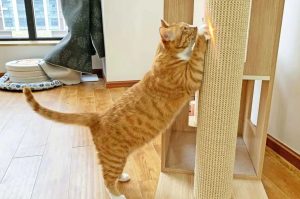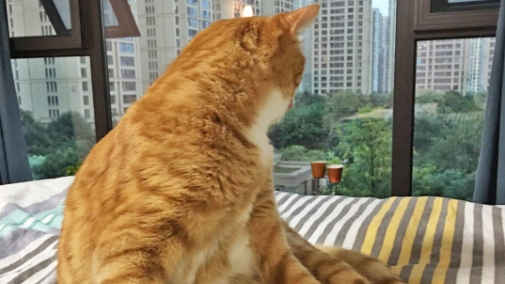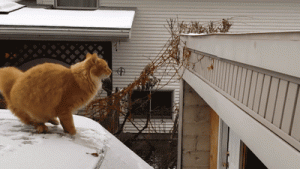When we leave for work… do cats get bored or stressed when home alone? A study shows that even house cats have a roaming radius of up to 3 kilometers (or more). This means that without environmental enrichment, no matter how big the house is, your cat will still be bored. Another study by the American Society for the Prevention of Cruelty to Animals (ASPCA) found that when a cat’s living space exceeds 1.67 square meters, their happiness and well-being depend largely on environmental enrichment.So, what exactly is environmental enrichment? Initially researched and applied in zoos, environmental enrichment refers to modifying an animal’s living environment according to its biological characteristics. By adding natural elements and providing more stimuli, animals are given more choices, allowing them to exhibit natural behaviors while reducing stereotypical or abnormal behaviors. In simple terms, it’s about making sure your cat’s life isn’t boring. Enrichment involves creating suitable habitats, offering various food types and ways of feeding, providing stimulating smells, toys, and social interaction.In this article, we’ll introduce 5 super simple, cost-effective, and easy-to-do enrichment tips for your cat!
-
Split Meals into Multiple Servings to Increase Challenge
In the wild, a cat’s hunting success rate is only 1 in 10, and hunting requires both physical effort and mental focus. Therefore, you can take 1/3 of your cat’s usual meal and create small challenges to make food harder to obtain. These challenges can be divided into two types:Hiding challenges: For example, take an old, unused piece of clothing, clean it, and stuff it with freeze-dried treats or cat food. You can also hide food in high places on a cat tree or inside boxes where your cat loves to go.Threshold challenges: For example, place food in a slow feeder or use a slow-feeding mat, so your cat has to work a bit harder to access their meal. You can also introduce playtime or teeth brushing before mealtime, creating a fun game and reward system.
-
Create Elevated Platforms and Spaces to Enhance Their Habitat
Cats are both predators and prey, so they need to hide as well as survey their surroundings. To accommodate these needs, provide your cat with various spots to rest and observe:Place a clean box on the floor as a safe, hidden “den.”Install cat scratching posts over 1.5 meters high or set aside safe areas on cabinets and appliances where your cat can observe their territory from above.Create lounging spaces by the windows so your cat can watch the outside world.You don’t necessarily need to buy a large cat tree or hammock; you can build or repurpose furniture and appliances, just ensure that the platforms are safe and stable.

-
Provide More Marking Locations and Scent Stimulation
Cats rely more on their sense of smell than their hearing or sight. So, respect their olfactory needs and add extra scent stimulation. For example:Place a variety of scratching posts in areas your cat frequents, allowing them to mark their territory with pheromones through scratching. These areas include the door, litter box, sofas, or rooms you spend time in.You can also grow cat grass, bring home non-toxic wildflowers, or purchase toys infused with catnip or silvervine to provide additional scent stimulation.
-
Offer a Variety of Fresh Toys
In the wild, a cat’s playtime simulates hunting and helps them practice their predatory skills. Therefore, their toys and play activities should be diverse. Ideally, a cat should have between 7 and 20 toys. This doesn’t mean you need to buy many expensive toys, nor does it mean that having 20 toys means you’re done. The toys should include:Interactive toys and solo toys (e.g., a wand toy and non-hazardous toys with no choking or entangling risks).Toys that make noise and those that offer scent stimulation (e.g., crinkle toys and silvervine).Toys that provide olfactory companionship and those that keep things fresh (e.g., toys left out and rotated periodically).Toys mimicking prey and those simulating movement patterns (e.g., mice toys and crumpled paper balls).As long as the toys meet these criteria, even items like hair ties, makeup sponges, or plastic bags can count as part of the 20 toys, but supervise your cat to ensure they are safe to play with!
-
Provide “Socializing Services” When You Get Home
In the wild, cats typically hunt alone, but they may form groups when resources are plentiful. Therefore, depending on your cat’s social needs, provide some social interaction. If your cat isn’t particularly clingy, still make sure to come home on time, as for some cats, you are part of their territory and need to be checked on regularly (i.e., finding you and observing you).
If your cat is very clingy, make sure to hug them, pet them, give them a gentle massage, and talk to them when you get home. Let your cat snuggle up to you. Your companionship is one of the most important factors that makes them feel happy and secure in their life!





